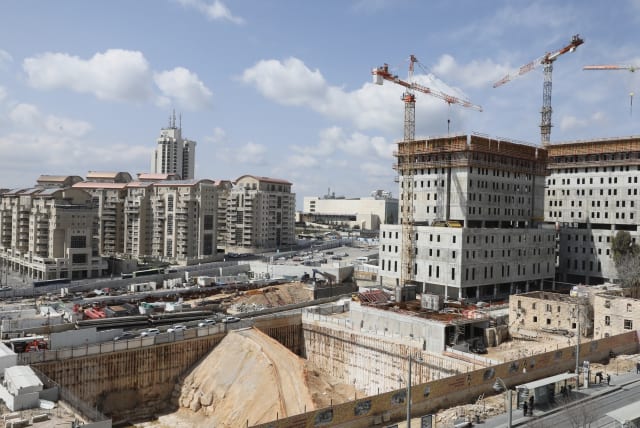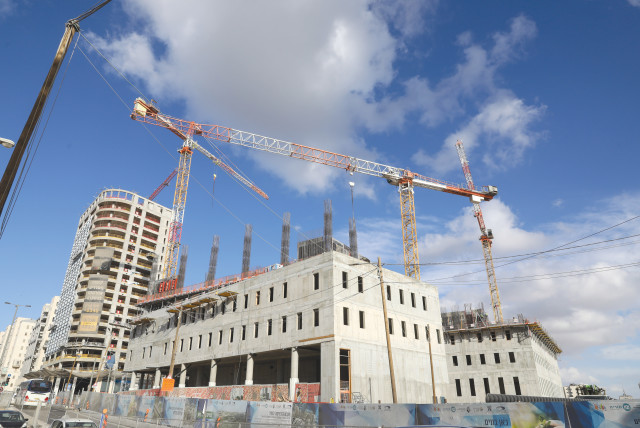Is Jerusalem done letting the high-rise construction fever run rampant?

There are growing signs that Jerusalemites are no longer ready to accept the construction of 30-story and even 46-story towers throughout the city.
Are the first cracks beginning to show in the high-rise building fever led by the municipality? Two recent cases may indicate the beginning of resistance, if not to all the high-rise construction plans, at least in the form of the demand for more selective location and height planning.
In the first case, an evacuation plan for Kiryat Hayovel aimed at building two towers in place of 50 apartments was approved, despite the city engineer’s strong opposition. On Hantke Street, in a complex that mainly consists of one- to four-room apartments in an area of half an acre, the district committee recently approved a project that doubles the number of apartments to 100, hence requiring the construction of towers.
The city engineer objected, explaining that the neighborhood couldn’t handle the load, but this failed to alter the decision, although the engineer is strongly backed by the neighborhood community administration and the Yovel 2041 association. The district committee said that the project is situated on the light rail axis. Eight years ago, permission was acquired to build towers up to 42 stories high along that axis.
Kiryat Hayovel residents are complaining that since the evacuation-construction plans started popping up around the neighborhood some 10 years ago, they have felt under attack by the eventual construction of towers.
However, this time, say some residents, what is happening is beyond any reasonable disagreements between the authority and the residents. This is a decision that goes against all the rules, made against the opinion of the city engineer who is the professional authority to approve such plans, as well as with complete disregard for the will of the residents.
In accordance with the construction policy for building along the light rail routes in Jerusalem, that plan would have translated into significant profit for property owners and real estate companies but would have been a disaster for the residents. And that is only one aspect.
Sources close to the city engineer say that the plan was originally only meant for the old residential buildings in Kiryat Hayovel. However, inexplicably, the committee approved a plan that is completely contrary to the rules established by the municipality. And no one has an explanation.
Jerusalem's high-rise construction spree breaks the rules, but can be fought
ANOTHER CASE may indicate a change in trend even among those who benefit the most from this policy: the developers and contractors. In this case, it is a victory for the green organizations and environmentalists. The plan to build nine new residential towers in northern Ramot was withdrawn by the developer himself.
Opponents of the plan claimed that such construction on an urban nature site was contrary to the city’s master plan. Due to the area’s topography, the construction would have caused some sections to become disconnected due to significant height differences on the ground.
“Perhaps they should have designed stairs or any other expensive solution to connect the parts of the project, and it was probably found to be ineffective and not worthwhile,” says a resident who was involved in the fight to prevent the project’s approval.
One reason invoked for the plan’s cancellation should encourage nature preservation activists. In order to build the planned expansion of the Ramot neighborhood, 60 trees would have had to be uprooted, and another 20 transplanted. Eventually, the project developers announced their decision to withdraw from the entire project.
Although the project on Hantke Street has been approved, there are growing signs that Jerusalemites are no longer ready to accept the decree according to which the character of the city would change with the construction of 30-story and even 46-story towers throughout the city.
There is no debate about the need to build housing units in the city, including many long-term rental apartments. The question is who decides where, and do we really need buildings with 46 floors, even when this has been agreed upon?
Athens, Greece, for example, which has five million inhabitants (five times that of Jerusalem) has no residential towers, and the maximum height allowed is 10 stories. Some towers are built in the city suburbs but not in the center, regardless of the residents’ opinion.
Perhaps this year it is appropriate for Jerusalem to learn something from Athens. ❖
Jerusalem Post Store
`; document.getElementById("linkPremium").innerHTML = cont; var divWithLink = document.getElementById("premium-link"); if (divWithLink !== null && divWithLink !== 'undefined') { divWithLink.style.border = "solid 1px #cb0f3e"; divWithLink.style.textAlign = "center"; divWithLink.style.marginBottom = "15px"; divWithLink.style.marginTop = "15px"; divWithLink.style.width = "100%"; divWithLink.style.backgroundColor = "#122952"; divWithLink.style.color = "#ffffff"; divWithLink.style.lineHeight = "1.5"; } } (function (v, i) { });


